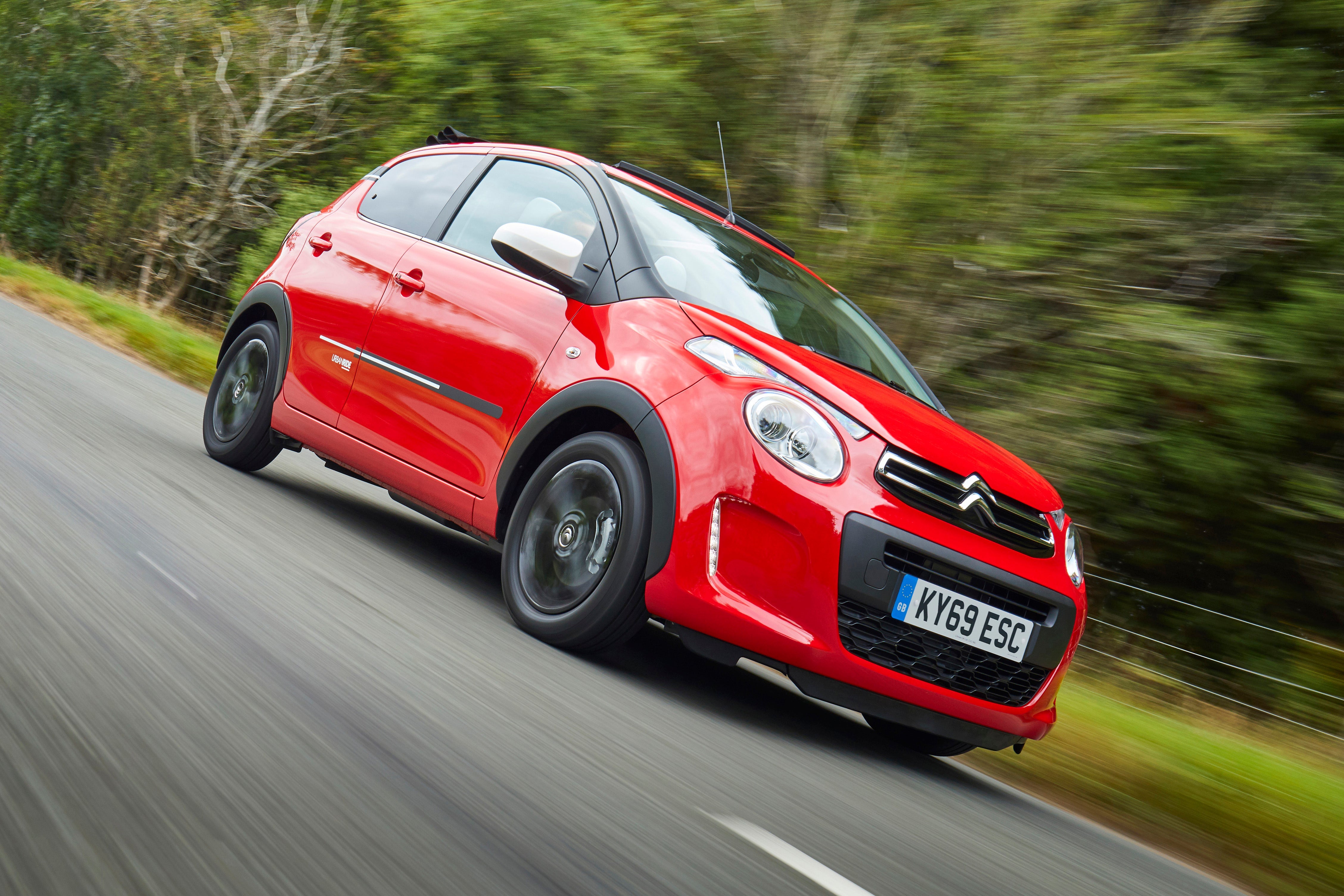Citroen C1 Review 2024
Written by Andrew Brady
Quick overview
Pros
- Easy to drive and to park but still capable on the open road
- Feel and Flair models are well-specified
- Cheap to buy, insure and run with strong reliability likely too
Cons
- Rear seats are relatively cramped
- Looks might not win you over
- Automatic saps the petrol engine’s enthusiasm
Overall verdict on the Citroen C1
"In this Citroen C1 review, we will be looking at one of the best used city cars you can buy. It has the key qualities of being very cheap to own, as well as being a breeze to drive. Crucially, it also has a good specification and doesn't feel as low cost as the price tag would suggest, which is good news for buyers."
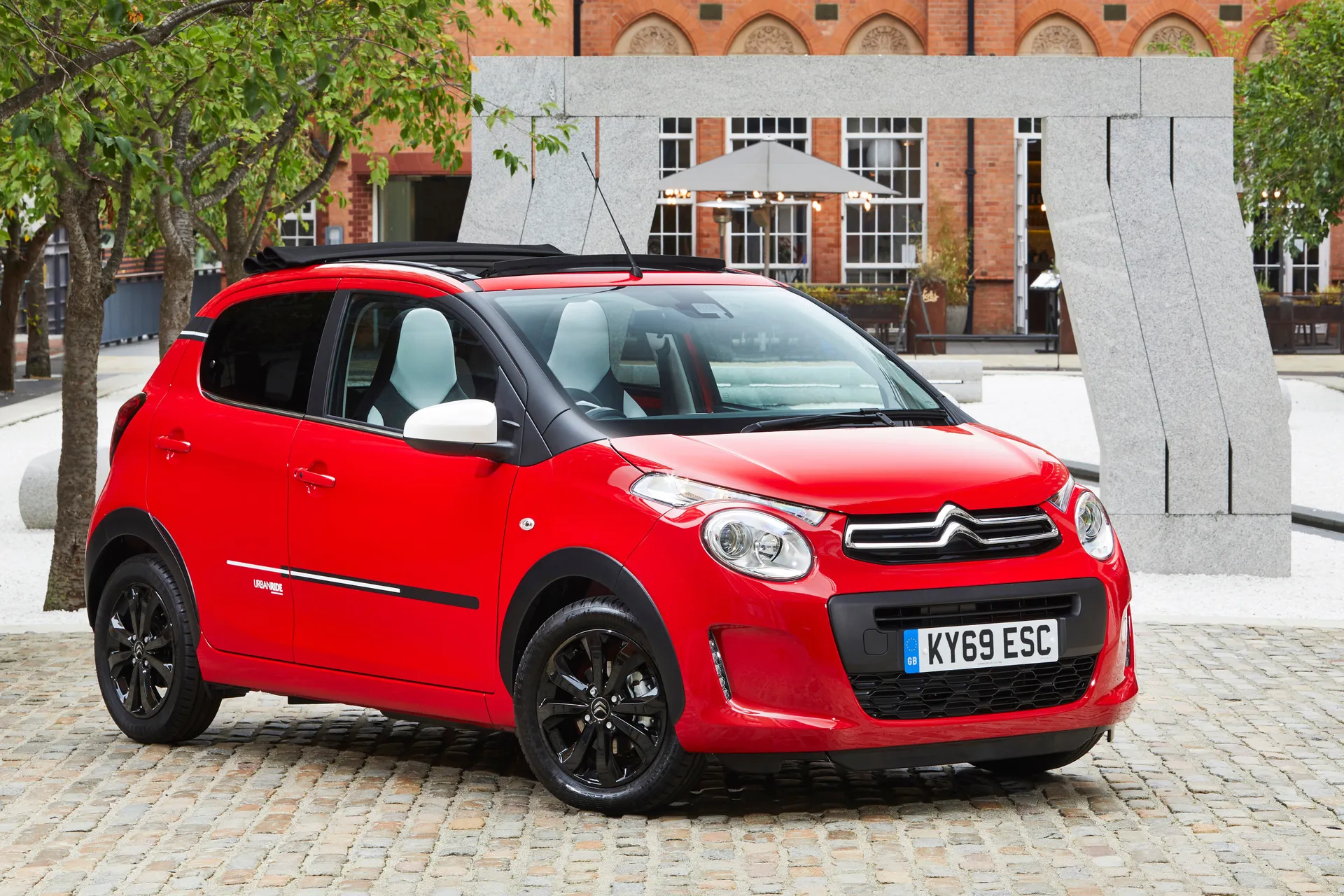
Modern city cars may still wear the tag and have similarly dinky exterior dimensions and price tags, but buyers expect them to be as capable of long journeys as cars costing thousands more. The same goes for the specification, and a stripped-out bargain-basement just won’t do anymore.
Citroen has played a big part in the ‘grown-up’ city car of today thanks to its C1. The first generation arrived in 2005, with this second-generation appearing in 2014. Both iterations were a joint venture with Peugeot and Toyota, with each manufacturer selling its own version. The collaboration meant reduced costs and boosted both the quality and specification.
The Citroen C1 range is simple, with a single petrol engine option, three- or five-door bodystyles and a choice of manual or automated manual gearboxes. Like any good city car, the Citroen C1 is compact - at less than 3.5 metres in length, it’s definitely short - but it maximises the available interior space thanks to its high roof. To keep costs down and save a little space, the rear side windows on all versions are hinged to open rather than rolling down in the conventional manner.
On the inside, you’ll find the Citroen C1 offers a decent amount of room depending on where you sit. Front seat passengers will have no complaints, with plenty of legroom and decent headroom thanks to the tall body. In the rear legroom is far less prevalent, so it is best kept for kids or very short journeys. The boot is also relatively small, although larger than some key rivals.
Despite the affordable used prices, the Citroen C1 doesn’t feel like a discount special in terms of comfort and equipment either. As long as you skip the base Touch model, you get smart interior trim, a 7-inch touchscreen with DAB and phone connectivity and air conditioning, all of which help it to feel more like a bigger car.
The 1.0-litre petrol engine is a three-cylinder unit offering a modest 72PS, but thanks to the C1’s light weight it offers respectable performance. Although it is happiest in town, there is enough power to make motorway journeys viable as long as it’s not too loaded up with people. It also makes it frugal too, with over 50mpg well within reach.
Out on the road, the Citroen C1 is sensibly designed for comfort and ease of driving rather than fun and frolics. The relatively soft suspension does a good job of absorbing poor road surfaces, although over longer undulations the C1’s size hampers its ability to cope as well as a larger car might. The Citroen C1 handles well too: safe, secure and predictable, it keeps the driver in the loop and won’t frighten inexperienced drivers.
Looking for a used car for sale? We've got 100s of Citroen Approved Used Cars for Sale for you to choose from, including a wide range of Citroen C1s for sale.
Is the Citroen C1 right for you?
With its ultra-low-cost approach to running costs, the C1 makes a strong case for itself as a first car, whether for you or a family member. The entry-level Touch model is very cheap and feels a little stripped out, but it doesn’t cost much more to upgrade and give the Citroen C1 the modern features most buyers will want. It also would make a handy second car if you need a small and inexpensive runaround for occasional short journeys when a big car is unnecessary or undesirable.
The Citroen C1 doesn’t feel quite as solid or sophisticated as the Skoda Citigo and SEAT Mii rivals, but it is a little cheaper on the used market than those models and should be just as reliable too.
What other cars are similar to the Citroen C1?
You can’t ignore the Citroen C1’s relatives - the Toyota Aygo and Peugeot 108 - which drive in a very similar manner and are mainly differentiated by looks, but either would be a good choice.
The SEAT Mii and Skoda Citigo are Volkswagen Group spin-offs of the Volkswagen Up, and bring the solid engineering and efficiency you usually get, just with a smaller price tag than the Volkswagen version. Smart-looking and good to drive, both the Mii and Citigo are attractive options.
The Hyundai i10 is also a strong contender and brings a quality feel and good specification.
Comfort and design: Citroen C1 interior
"With its city car dimensions and price tag, it should come as no surprise to find that the cabin of the Citroen C1 is a straightforward affair, but that doesn’t mean it is completely spartan."
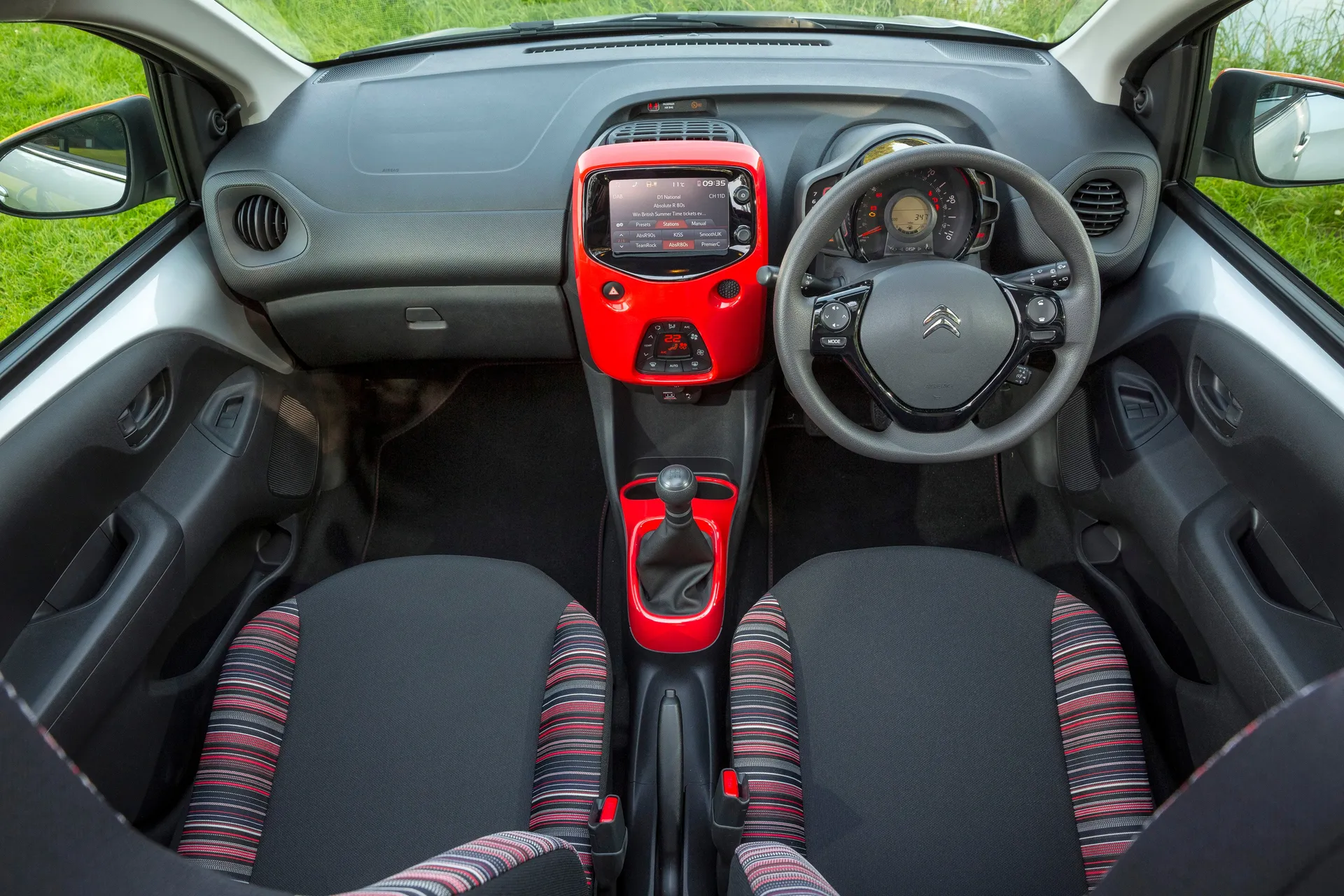
Climb into the driver’s seat and you’re greeted by a cheerful interior with all the main controls grouped closely around the driver. A large speedometer holds within it a digital display that shows fuel and outside temperature, while the rev counter and warning lights sit on the outside. The pleasingly chunky steering wheel also holds controls for the infotainment system (depending on the model), while the screen itself is close to the driver and easy to operate.
Getting comfortable is easy for those sat in the front seats, with height adjustment for the driver on Feel models and above, and despite its size, the Citroen C1 makes you feel safely enclosed, helped by the relatively high window line and the scope to set the seating position low down.
The driving position is good too with height and reach adjustment for the steering wheel, although shorter drivers will find that the short bonnet drops out of sight through the windscreen even if you jack the seat up high. That said, the window area is generous so the view out is good, and with such a vertical tailgate it’s easy to judge where the back of the car is during parking manoeuvres.
The Citroen C1's front seats are comfortable for most sizes of adult thanks to decent width and length in the base, although side support is somewhat lacking.
Quality and finish
The Citroen C1’s cabin is never going to give Audi designers sleepless nights, but given the modest sticker price when new you might find the fit and finish a welcome surprise. Go for the basic Touch model and it’s a little more obvious that this is a car built down to a price, but the rest of the range benefits from smarter seat fabrics and more colour throughout the cabin that helps lift the mood.
Clever touches all contribute to the positive vibes, like the way the body-coloured metal is incorporated into the doors as a design feature rather than simply saving a few Euros.
The materials used inside the Citroen C1 are designed to be hard-wearing rather than particularly plush, but the mix of colours and textures means it doesn’t feel like a solid lump of dark plastic, and it’s clearly put together well. The whole car is designed to be lightweight but it never feels insubstantial, which is good news if you plan to hang on to it for a few years.
Infotainment: Touchscreen, USB, nav and stereo in the Citroen C1
Plump for the lowest possible spec of Citroen C1 - the Touch model - and it comes with the most humble of audio systems, amounting to an AM/FM radio with a USB input and two speakers. Technically, that’s enough to get by on but it’s hardly the stuff of dreams. Given that it was designed to be a low-cost model, there was no option to upgrade either.
Meanwhile, the rest of the Citroen C1 range gets the far smarter 7-inch touchscreen that is well-loaded with desirable features. It comes with DAB, USB input, an extra pair of speakers to give you four in total and controls on the steering wheel. It’s designed to work hand-in-hand with smartphones too; there’s Bluetooth for hands-free calling and streaming, plus Mirror Screen so you can operate certain functions on your phone directly through the car.
It works well too - the screen feels tough and has a slightly matte finish which bodes well for thousands of miles of prodding fingers, while it’s easy to navigate through the screens and it rarely suffers from lag. You can also download specific apps that work as navigation if you don’t want to use the native apps on your smartphone.
Space and practicality: Citroen C1 boot space
The dimensions of the Citroen C1 are 3.4m in length and 1.6m wide, making it one of the smallest cars you can buy and perfect for city duties. No one buys a city car expecting to carry a family of seven plus luggage across Europe, but there’s no point buying one if it’s too small to accommodate adult humans. As expected it’s those up front who get the best deal - big doors on the three-door version mean a massive aperture to climb through and it’s easy to get installed.
Even getting into the rear seats is almost as easy on the three-door as it is on the five-door, so there’s a strong case for choosing the cheaper option depending on your needs.
Up front there is plenty of space to accommodate tall adults, with good legroom and plenty of headroom thanks to the relatively tall body. Elbow room is a little less plentiful, but unless both you and your passenger are bouncers or are particularly fond of 1980s fashion it shouldn’t be a problem.
It less impressive when you step into the Citroen C1's rear seats, with legroom in particular lacking for adults and older children. Even if you just have small children in the rear, add in the bulk of a car seat and you’ll find them putting their feet up on the back of the front seats in no time. Headroom is acceptable in the rear although it’s not quite as generous as in front.
As for storage space, the Citroen C1 offers 196-litres in the boot and like most cars in this class the space tends to be relatively narrow but deep, which can be restrictive depending on what kind of cargo you want to carry. That’s over 50-litres fewer than the SEAT Mii and Hyundai i10, but it is more than the almost-identical Toyota Aygo. Drop the rear seats and you have 780-litres to play with.
Storage in the cabin is acceptable, with a decent glovebox but relatively slim door pockets - hardly a surprise given the car is quite narrow. Overall the Citroen C1 is pretty much par for the course in terms of space efficiency - you won’t get much more space by going elsewhere.
Handling and ride quality: What is the Citroen C1 like to drive?
"Given that city cars are expected to be tramping tough urban streets for the majority of their lives, the emphasis tends to be on ride comfort rather than razor-sharp handling, and the Citroen C1 is happy to oblige."
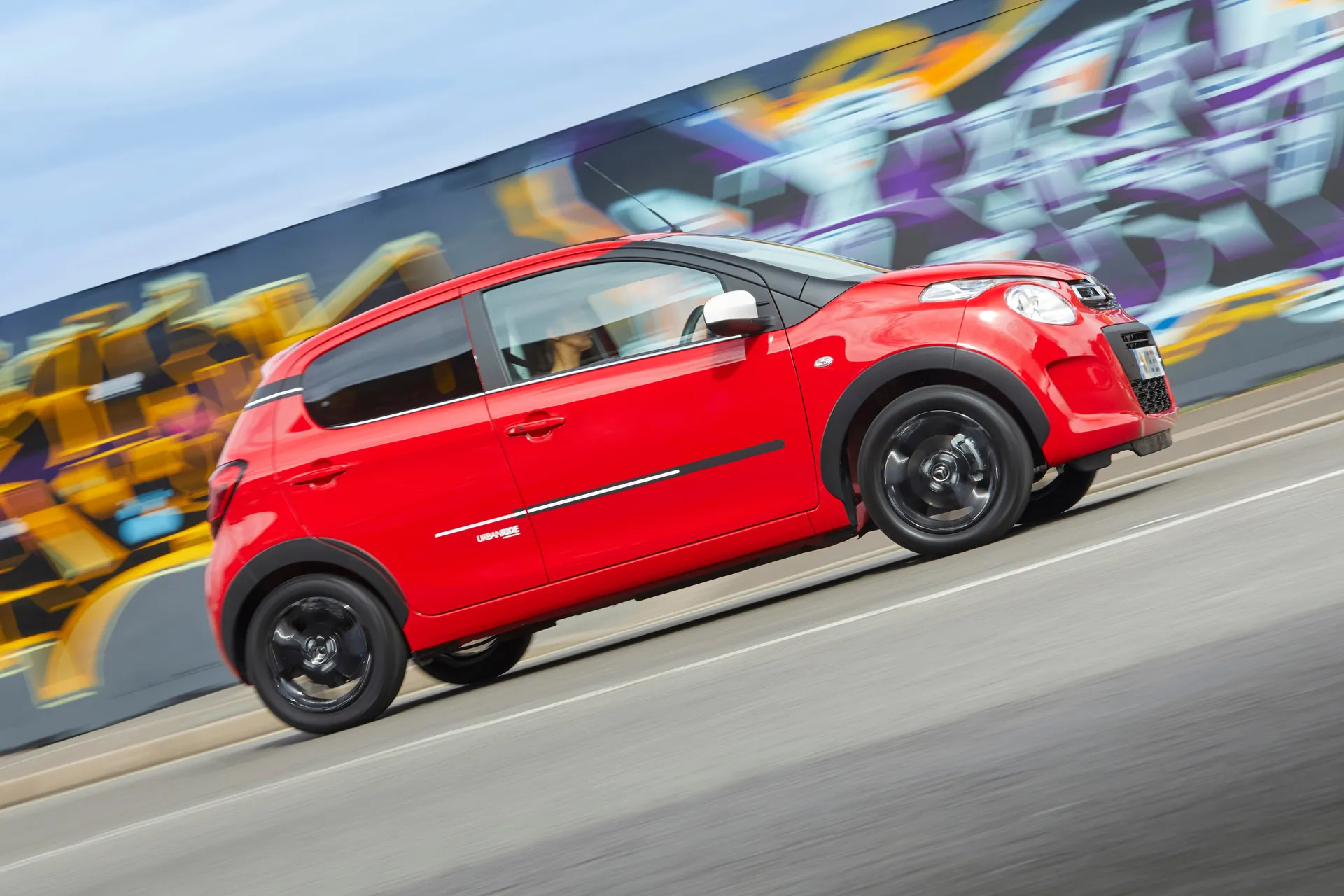
The power-assisted steering is light, but not so light you feel disconnected from what’s going on at the front wheels, and it inspires confidence in the driver. It’s quick to respond to driver inputs too, which adds to the feeling of nippiness when you’re darting around city streets. It doesn’t fall apart at motorway speeds either, not feeling overly light or skittish. Like most cars of this size, you need a steady hand in strong crosswinds, but it’s rare that the Citroen C1 feels anything other than secure on the road.
Cars with a short wheelbase like the Citroen C1 can suffer from indifferent ride quality, but for the most part it avoids falling into this trap. The suspension is deliberately soft in its tuning, and does a good job of soaking up the worst that poor roads can throw at it. It’s not a magic carpet, and the bigger 15-inch wheels on the Feel and above models are better able to cope than the standard 14-inch versions on the basic Touch model, but it’s unlikely to have you grumbling.
The flip side of this softly-softly approach is that the Citroen C1 is less comfortable should you ask it to behave like a mini hot hatch. It’s certainly game enough to try, but there’s more body roll than you would hope for and the seats aren't designed to cope with high cornering forces either. It feels safe and secure if a little out of its depth, but this is unlikely to matter to most buyers interested in a car like this.
What engines and gearboxes are available in the Citroen C1?
Following the discontinuation of the larger 1.2-litre engine with 82PS in 2018, the Citroen C1 was limited to the single option of a 1.0-litre, three-cylinder unit dishing out a heady 68PS (uprated to 72PS in 2018). That doesn’t sound like - and isn’t - much for any of the C1 range, but the Citroen weighs as little as 840kg (about half the weight of a BMW 5 Series) so it doesn’t have to pull too much, as long as it’s not loaded up with people and luggage. More importantly, like many three-cylinder units, the engines are smoother and more characterful than similarly-sized four-cylinder offerings: they are keen to rev and feel willing, however unrealistic your acceleration demands might be.
The Citroen C1 is in its element in the city, where it can get away from the traffic lights smartly and is sufficiently quick to keep up with urban traffic. Out on quicker country roads or the motorway you may need a little more patience, but wind it all the way up and it will do 99mph - more than enough to get you in trouble.
The standard five-speed manual gearbox won’t cause you any problems either. It has a lightweight feel when you change gears and the ratios are well-chosen to give decent acceleration without running out of puff at higher speeds. The Citroen C1 was offered with an automated manual gearbox on a limited number of models, but it's best avoided.
Refinement and noise levels
For a car of this size, the Citroen C1 does a fine job of keeping your ears and your sanity intact. For starters, that three-cylinder engine does create a little bit of noise when you start to exercise it, but it’s a pleasing sound rather than a cacophonous one and will rarely bother you or your passengers - impressive for one so small.
The same goes for wind and tyre noise levels. Skinny tyres certainly help, and although the Citroen C1 hasn’t got the space to pack in lots of sound deadening, you don’t feel like the last biscuit in the tin. Wind noise picks up a little when you get to motorway speeds but the same goes for most of its rivals, and in truth this will likely be an occasional occurrence rather than being a frequent motorway hack.
The front seats, in particular, offer decent support even on longer journeys, but the rear seats are best left to the kids or for short hops. Further pluses for the cabin environment are the air conditioning and audio system, both of which do their bit to make you feel like you’re in a bigger car.
Safety equipment: How safe is the Citroen C1?
The Citroen C1 was last tested by Euro NCAP in 2014, where it scored a sound four stars out of five. It achieved an 80 per cent rating for both adult and child protection, a strong score for a car of this size, although it did less well on pedestrian impact at 62 per cent and 56 per cent on safety assist, although the latter would be improved with the addition of the Active City Brake pack.
One of the ways in which the Citroen C1’s sticker price is kept so low is the careful selection of standard equipment. All C1 models are fitted with six airbags, a low tyre pressure warning system and ESP as standard, while Flair models add to that a speed limiter. C1s also come with ISOFIX child seat mounting points and a space-saver spare wheel.
Active City Brake was available as an option, which also incorporates a lane departure warning system and traffic sign recognition, which is useful if you can find a car with it fitted. Top-spec Flair models are also fitted with a reversing camera, and it was possible to add rear parking sensors although arguably they're not necessary on a car this size.
MPG and fuel costs: What does a Citroen C1 cost to run?
"A big plus of running a small car like the Citroen C1 is the low running costs. "
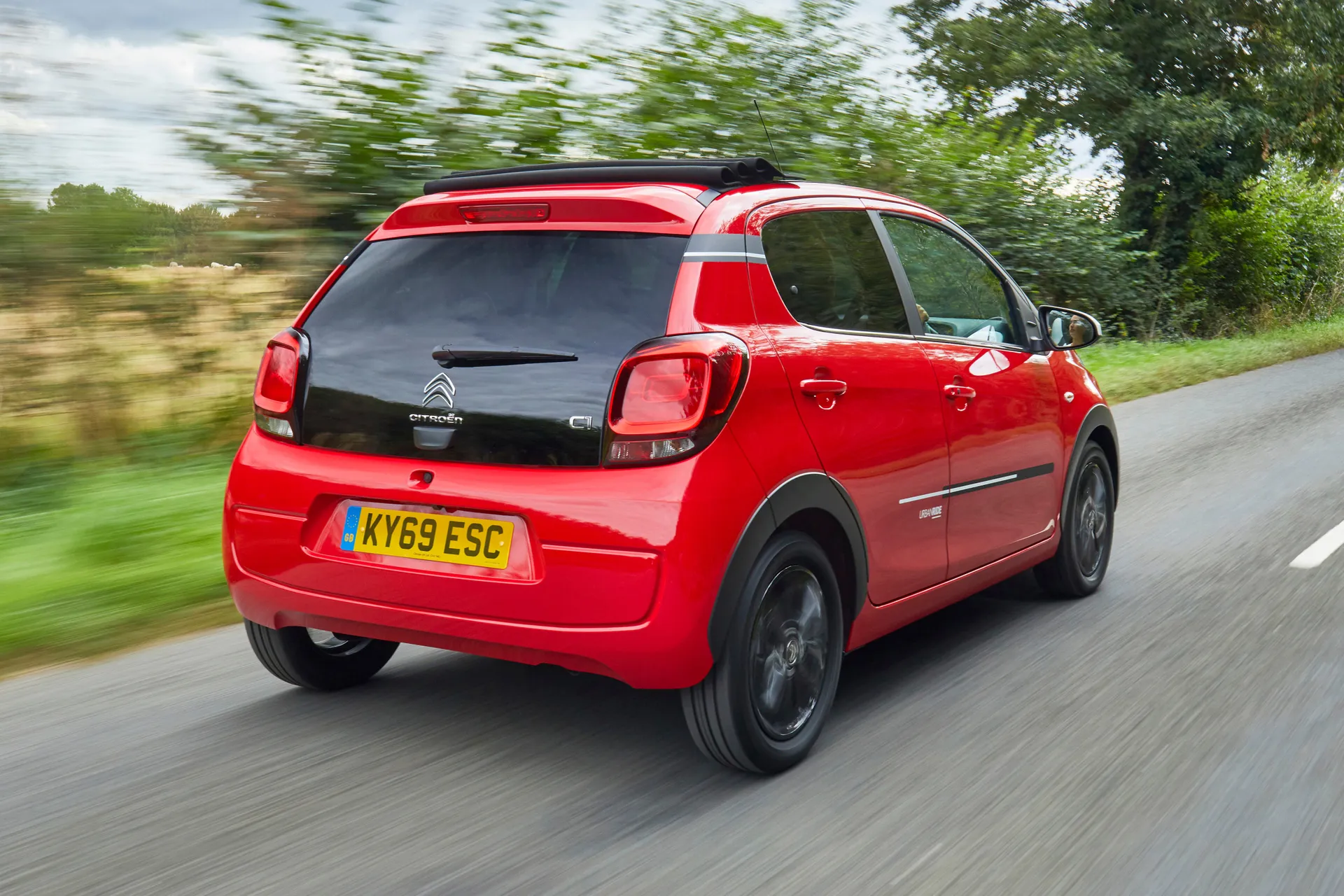
Whichever version you choose you should be able to crack 50mpg without trying very hard - the official WLTP fuel consumption figures say it is capable of up to a combined 68.9mpg, or as much as 74.3mpg combined by the old NEDC standard. Driven with a light touch the Citroen C1 will return strong fuel consumption figures, but it’s worth remembering that because of its modest performance, if you hurry it along you will drink significantly more fuel as a result.
Insurance groups and costs
The Citroen C1 falls into insurance groups 7 to 13 - the latter for the more powerful engine fitted in cars with the roll-back Airscape roof. Otherwise, the C1 is a very affordable car to get cover for.
This is a reason why the Citroen C1 is so popular as a first car, and insurers can look favourably on buying something new (or newish) because they are more likely to be fitted with key safety features like ESP. The Citroen C1 also makes sense if you are a bit older and just need a runaround - your premium might end up being smaller than your fuel bill.
VED car tax: What is the annual road tax on a Citroen C1?
Any Citroen C1 you buy that was registered from 1 April 2017 will pay road tax at the normal rate of £190 per year.
If the thought of buying an older car doesn’t bother you, it is possible to cut this cost - for example, most pre-March 2017 Citroen C1s are in the old band A, which attracts zero VED.
How much should you be paying for a used Citroen C1?
"Although the Citroen C1 had a low new price, that doesn’t necessarily translate into low used prices. Depreciation on city cars tends to be less steep than you might think, partly because they don’t have as far to fall. It remains a popular model, so there are plenty of late examples to pick from."
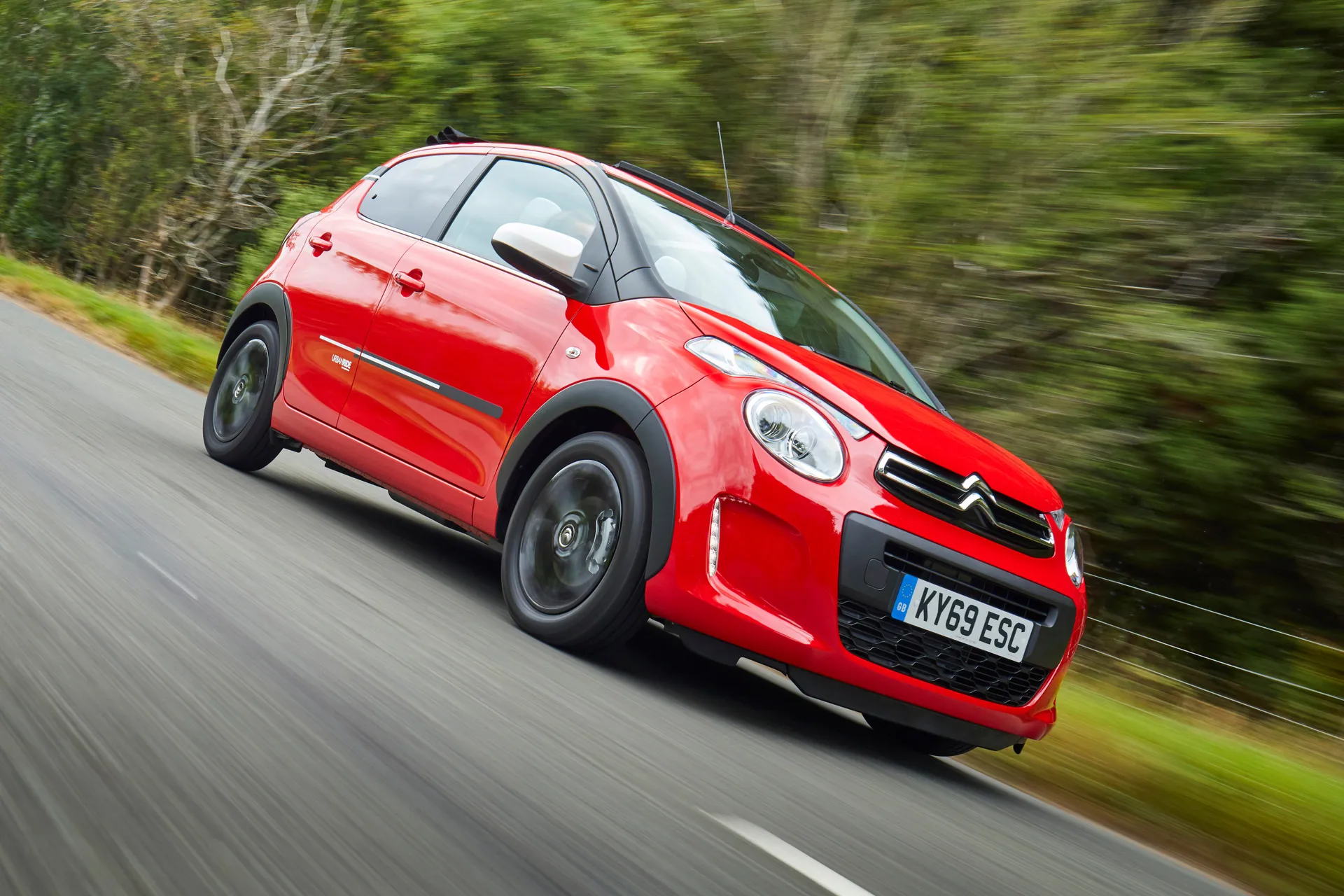
As for older cars, there have been no major changes to the Citroen C1 since the second-generation version arrived in 2014, so you can go for a car within your budget and not feel like you are missing out. The earliest models are now around the £2500 mark, which gets you a 68PS Touch or Feel model. For something newer, reckon on paying around £10,000 for a three-year old 1.0-litre car in Shine specification.
Trim levels and standard equipment
The basic Citroen C1 Touch model doesn't come with much - you get a USB input for the two-speaker stereo and electric front windows, so you can be sure that travelling in a Touch will be far from a luxurious experience.
Much more appealing is the Citroen C1 Feel model, which nets you not only desirable stuff like air conditioning and that feature-packed infotainment system, but also things like the bigger 15-inch wheels that help the ride and handling, the height-adjustable driver’s seat and the smarter trim which helps to lift the cabin. We think it’s the best value in the range.
The Citroen C1 Flair model adds a reversing camera, 15-inch alloy wheels, electrically heated and adjustable door mirrors and some chrome trim, which is also good value but not all of it is absolutely essential. The Airscape models add a full-length fabric sunroof for something close to a convertible feel, but will be more expensive and harder to find.
The later Live, Sense and Shine trims were comparable to the earlier Touch, Feel, and Flair trims. Citroen also offered the Urban Ride with black exterior accents and a reversing camera, while the Airscape versions have the fold-back canvas roof to give the feel of a convertible but without the fully exposed cabin.
Ask the heycar experts: common questions
Does the Citroen C1 have a Toyota engine?
Does the Citroen C1 have a timing belt or chain?
Is a Citroen C1 a good first car?
Get our latest advice, news and offers
Keep me updated by email with the latest advice, news and offers from heycar.
By submitting you agree to our privacy policy
